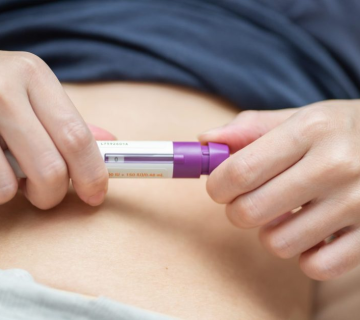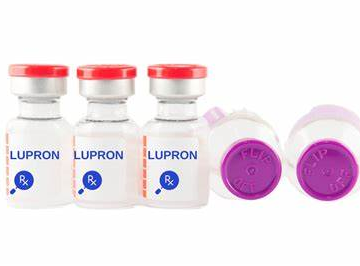
Fallopian Tube Obstruction: Everything You Need to Know
Hey there! If you’re reading this, you might be wondering about fallopian tube obstruction—what it is, why it happens, and what you can do about it. Maybe you’ve heard the term tossed around by a doctor or stumbled across it while searching online. Either way, you’re in the right place. This article is your one-stop guide to understanding this condition in a way that’s easy to follow, packed with helpful info, and loaded with practical tips. We’ll dive into the basics, explore causes and symptoms, break down diagnosis and treatment options, and even sprinkle in the latest research to give you a fresh perspective. Let’s get started!
What Is Fallopian Tube Obstruction?
Imagine your fallopian tubes as little highways connecting your ovaries to your uterus. Their job? To carry eggs from the ovaries to the uterus, where they might meet sperm and start a pregnancy. A fallopian tube obstruction is like a roadblock on that highway—it stops the egg from making its journey. Sometimes one tube is blocked; other times, it’s both. Either way, it can make getting pregnant trickier than usual.
This condition is more common than you might think. Studies estimate that about 20-30% of infertility cases in women are linked to problems with the fallopian tubes, including blockages. That’s a big deal! But don’t worry—we’re going to unpack everything step by step so you can feel informed and in control.
Why Should You Care?
You might be asking, “Does this even apply to me?” Well, if you’re trying to have a baby and it’s not happening, or if you’ve had pelvic pain or infections in the past, fallopian tube obstruction could be part of the puzzle. Even if you’re not planning a family right now, knowing about this can help you spot warning signs early and take action if needed.
What Causes Fallopian Tube Obstruction?
So, what puts those roadblocks in your fallopian tubes? There are a bunch of culprits, and they range from infections to surgeries gone wrong. Let’s break it down.
Common Causes
-
- Pelvic Inflammatory Disease (PID): This is a big one. PID happens when bacteria (often from sexually transmitted infections like chlamydia or gonorrhea) travel up into your reproductive system. It can leave scars that block your tubes. Research says PID is behind up to 50% of tubal blockages.
-
- Endometriosis: Ever heard of this? It’s when tissue like the lining of your uterus grows outside it—like on your fallopian tubes. This can cause blockages or sticky adhesions that mess up the tubes’ function.
-
- Past Surgeries: Had an appendectomy or C-section? Scar tissue from surgeries in your pelvic area can sometimes wrap around or squeeze your tubes shut.
-
- Ectopic Pregnancy: If a fertilized egg gets stuck in a tube instead of the uterus, it can damage the tube and lead to a blockage later on.
-
- Infections: Even non-STI infections, like from a ruptured appendix, can spread and cause trouble.
Less Talked About Causes
Here’s where we dig a bit deeper than most articles. Some causes don’t get as much spotlight but are worth knowing:
-
- Congenital Issues: Rarely, some people are born with tubes that didn’t form quite right. This isn’t super common, but it happens.
-
- Hydrosalpinx: This is when a tube gets blocked and fills with fluid. It’s often tied to past infections, and it can make IVF (in vitro fertilization) less successful if not treated.
-
- Uterine Fibroids: Big fibroids near the tubes can sometimes press on them, causing a partial blockage.
Real-Life Example
Think of your fallopian tubes like straws. If you spill soda (infection) or glue (scar tissue) inside, it’s going to clog up eventually. That’s what’s happening inside your body when these causes kick in.
What You Can Do
✔️ Get Tested Early: If you’ve had an STI or pelvic surgery, ask your doctor about checking your tubes.
❌ Don’t Ignore Pain: Pelvic pain isn’t normal—don’t brush it off as “just cramps.”
What Are the Symptoms of Fallopian Tube Obstruction?
Here’s the tricky part: fallopian tube obstruction doesn’t always wave a big red flag. Some women don’t even know they have it until they try to get pregnant and hit a wall. But there are clues if you know where to look.
Possible Symptoms
-
- Trouble Getting Pregnant: If you’ve been trying for a year (or 6 months if you’re over 35) with no luck, blocked tubes might be why.
-
- Pelvic Pain: A dull ache or sharp pain in your lower belly, especially on one side, could hint at a problem.
-
- Unusual Discharge: If a blockage traps fluid (like in hydrosalpinx), you might notice watery or odd discharge.
-
- Painful Periods or Sex: Endometriosis or scarring can make these extra uncomfortable.
Why It’s Hard to Spot
Unlike a broken arm, blocked tubes don’t always scream “I’m here!” That’s why doctors often find it during infertility tests rather than routine checkups. A 2023 study in the Journal of Reproductive Medicine found that nearly 40% of women with blocked tubes had no obvious symptoms—yikes!
Action Steps
✔️ Track Your Cycle: Notice if anything feels off—like super heavy periods or random pain.
✔️ Talk to Your Doc: If something’s not right, don’t wait. Mention any past infections or surgeries—they’ll connect the dots.
How Is Fallopian Tube Obstruction Diagnosed?
Okay, so you suspect a blockage—how do you find out for sure? Doctors have a few cool tools up their sleeves. Let’s walk through them.
Diagnostic Methods
-
- Hysterosalpingogram (HSG):
-
- What It Is: A fancy X-ray where dye is injected into your uterus. If the dye flows through your tubes and spills out, they’re open. If it stops, there’s a block.
-
- Pros: Quick, pretty accurate.
-
- Cons: Can be uncomfortable—think mild cramps.
-
- Fun Fact: About 15% of HSGs show a blockage that isn’t really there (false positive), so follow-ups matter.
-
- Hysterosalpingogram (HSG):
-
- Laparoscopy:
-
- What It Is: A tiny camera goes into your belly through a small cut to peek at your tubes directly.
-
- Pros: Super detailed—doctors can see scars, endometriosis, everything.
-
- Cons: It’s surgery, so there’s recovery time.
-
- When It’s Used: Usually if HSG isn’t clear or surgery’s already planned.
-
- Laparoscopy:
-
- Ultrasound:
-
- What It Is: Sound waves check for fluid buildup (like hydrosalpinx).
-
- Pros: No radiation, non-invasive.
-
- Cons: Not as good at spotting small blockages.
-
- Ultrasound:
What’s New in Diagnosis?
Here’s a gem most articles skip: researchers are testing 3D ultrasound with contrast to get a clearer picture without surgery. A 2024 study in Fertility and Sterility showed it’s almost as good as laparoscopy for spotting blockages—pretty exciting stuff!
Your Next Move
✔️ Ask Questions: If your doctor suggests an HSG, ask what to expect—prep makes it less scary.
❌ Don’t Delay: The sooner you know, the sooner you can plan.
How Does Fallopian Tube Obstruction Affect Fertility?
This is the big question for many: “Can I still have a baby?” The answer depends on a few things.
The Impact
-
- One Tube Blocked: If the other tube and ovary are healthy, you’ve still got a decent shot at natural pregnancy—about 50% of women in this boat conceive without help.
-
- Both Tubes Blocked: This is tougher. Sperm and egg can’t meet naturally, so you’ll likely need fertility treatments like IVF.
-
- Hydrosalpinx Twist: If a blocked tube leaks fluid into the uterus, it can lower IVF success rates by up to 50%, according to a 2022 study in Human Reproduction.
A Hopeful Note
Even with blocked tubes, tons of women become moms every year thanks to modern medicine. It’s not the end of the road—it’s just a detour.
What You Can Do
✔️ See a Specialist: A fertility doc (reproductive endocrinologist) can map out your options.
✔️ Stay Positive: Stress doesn’t help fertility—focus on what you can control.
Treatment Options for Fallopian Tube Obstruction
Good news: there are ways to tackle this! Treatments depend on what’s causing the blockage and your goals (pregnancy or just pain relief). Let’s explore.
Non-Surgical Options
-
- Antibiotics: If an infection’s to blame and it’s caught early, meds might clear it up before scarring sets in.
-
- Fertility Drugs with One Open Tube: If one tube’s working, drugs like Clomid can boost ovulation on that side.
Surgical Options
-
- Tubal Surgery (Tuboplasty):
-
- What It Is: Surgeons remove scar tissue or open the tube.
-
- Success Rate: About 20-40% of women conceive naturally after, per a 2023 Obstetrics & Gynecology report.
-
- Best For: Mild blockages near the uterus.
-
- Tubal Surgery (Tuboplasty):
-
- Salpingectomy:
-
- What It Is: Removing a damaged tube (especially with hydrosalpinx) before IVF.
-
- Why It Helps: Boosts IVF success by clearing toxic fluid.
-
- Downside: You lose that tube for natural conception.
-
- Salpingectomy:
IVF: The Game-Changer
-
- What It Is: Eggs are taken from your ovaries, fertilized in a lab, and placed in your uterus—bypassing the tubes entirely.
-
- Success Rate: Around 30-50% per cycle, depending on age and health.
-
- Cost: $12,000-$15,000 per try in the U.S., though insurance might help.
Fresh Research Angle
A 2024 study in Reproductive Biology and Endocrinology found that microsurgical techniques—using ultra-tiny tools—improved tubal surgery outcomes by 15% over traditional methods. It’s not everywhere yet, but it’s a promising update!
Your Plan
✔️ Weigh Risks vs. Rewards: Surgery might work, but IVF’s often faster—talk it out with your doctor.
❌ Don’t Rush: Get a second opinion if you’re unsure.
Can You Prevent Fallopian Tube Obstruction?
Prevention beats cure, right? While you can’t stop everything, you can lower your risk.
Practical Tips
-
- Practice Safe Sex: Condoms cut STI risk, which cuts PID risk.
-
- Treat Infections Fast: Don’t let a little bug turn into a big scar.
-
- Regular Checkups: Catch endometriosis or fibroids early before they mess with your tubes.
-
- Healthy Lifestyle: Smoking and obesity up inflammation—quitting and staying active help.
What Science Says
A 2023 study in The Lancet linked consistent STI screening to a 25% drop in tubal damage over 10 years. Small steps, big payoff!
Quick Checklist
✔️ Get Screened: Annual gyno visits can spot trouble early.
❌ Don’t Skip Symptoms: Pain or weird discharge? Check it out.
Living with Fallopian Tube Obstruction: Emotional and Practical Tips
Let’s get real—this can be an emotional rollercoaster, especially if you’re dreaming of a baby. Here’s how to cope.
Emotional Support
-
- Talk It Out: Friends, family, or a therapist can lighten the load.
-
- Join a Group: Online forums like Resolve.org connect you with others who get it.
-
- Give Yourself Grace: It’s okay to feel frustrated— infertility’s tough.
Practical Hacks
-
- Track Ovulation: Apps like Flo help you time things if one tube’s open.
-
- Nutrition Boost: Omega-3s and antioxidants (think salmon and berries) might reduce inflammation, per a 2024 Nutrients study.
-
- Stress Less: Yoga or walks can keep you grounded.
A Little Story
Meet Sarah—she found out both tubes were blocked at 32. After a rough few months, she tried IVF and welcomed twins last year. Her tip? “Don’t bottle it up—talking saved me.”
Latest Research on Fallopian Tube Obstruction
Most articles stop at the basics, but let’s peek at what’s new in 2025.
Cutting-Edge Stuff
-
- Stem Cell Therapy: Early trials in Stem Cell Reports (2024) suggest stem cells might one day regenerate damaged tubes—wild, right?
-
- AI Diagnosis: A 2024 Journal of Medical Imaging study used AI to analyze HSG images, catching blockages 10% faster than humans.
-
- Nanotech Treatments: Tiny particles to dissolve scar tissue are in the works—still experimental, but cool!
Why It Matters
These breakthroughs could mean less invasive fixes and better odds down the road. Stay tuned!
Your Questions Answered
Let’s tackle some long-tail keywords you might be searching—like “Can fallopian tube obstruction cause miscarriage?” or “How to unblock fallopian tubes naturally?”
-
- Can It Cause Miscarriage? Not directly—miscarriage is more about the uterus. But a past ectopic pregnancy from a blockage could raise future risks.
-
- Natural Fixes? Sorry, no solid proof herbs or massages unblock tubes. Focus on prevention instead.
-
- Does It Hurt All the Time? Not usually—pain’s more tied to causes like endometriosis than the blockage itself.
-
- Can It Heal on Its Own? Rarely. Scars don’t vanish without help, but mild swelling might ease up.
Wrapping It Up: Your Next Steps
You’ve made it through the nitty-gritty of fallopian tube obstruction! Whether you’re just curious or facing it head-on, you now know the causes, symptoms, treatments, and even some cutting-edge research. The key? Don’t go it alone—chat with your doctor, lean on support, and take it one step at a time.
Let’s Chat!
What’s on your mind? Drop a comment below—have you dealt with this? Got a question I didn’t cover? I’d love to hear from you! And if this helped, share it with a friend—they might need it too.




No comment